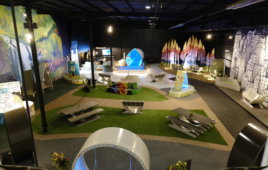The White House’s 2011 Blueprint for a Secure Energy Future suggests that at least 80% of America’s electricity come from clean energy sources by 2035. To realize this goal, energy sources such as wind, solar, biomass and hydropower must be viable. According to one analysis, developments in nanotechnology are critical to this viability and reaching the goal.
The law firm McDermott Will & Emery has released a white paper on clean energy and nanotechnology. It delivers some surprising results.
Nanotechnology makes energy generation, storage, transmission and conservation more efficient because of the unique properties of matter that can be exploited at the nanoscale, says a new report by the international law firm McDermott Will & Emery. For example, the high surface area of nanoparticles has been useful in the improving battery lifetime and ultracapacitor speed power delivery. The unique light absorption and conversion properties of nanoparticles can be exploited for increasing the efficiency of solar cells as well. Carbon nanotubes are being used to develop power transmission cables that are more corrosion-resistant than copper wires with lower electrical resistance because of their electronic properties and chemical robustness, which translates to cost savings. When employed in vehicle wiring, the carbon nanotube wires, because of the reduced weight, have the potential to greatly increase fuel efficiency.
To understand the trends of nanotechnology innovation in the energy sector, the law firm analyzed the associated patent literature and have compiled its results in a white paper that can be found here, on the firm’s website. Although the U.S. is the global leader, the paper shows that Asian countries have increased their relative patent activity over the past six years. While companies in the computers and electronics sector are the most prevalent in the nanotechnology patent landscape, innovation within the energy and chemical sectors are on the rise.
McDermott Will & Emery
www.mwe.com
The percentage of nanotechnology patents by country and year.
Windpower Engineering & Development
Filed Under: Green engineering • renewable energy • sustainability




